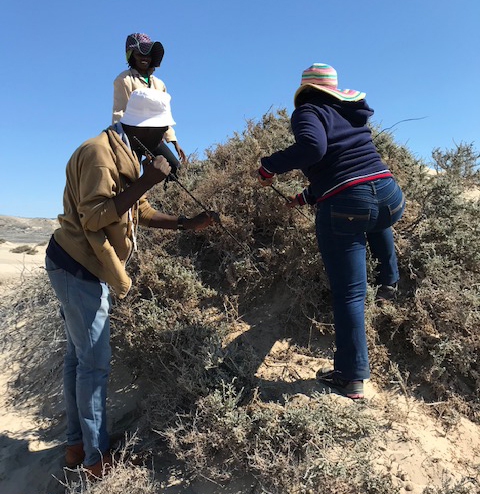Litterbags collection for the litter decomposition experiment begins in the Skeleton Coast National Park
A team of researchers and students travelled from Windhoek to the Skeleton Coast National Park during the first week of June 2019. The team went to collect the first set of litterbags that were deployed in the field end of March 2019. The aim of the experiment is to measure the rate of litter decomposition in a hyper-arid system. About 464 litterbags were deployed under different plant species canopies, with the purpose of collecting a set of two litterbags per shrub to determine the weight loss (which is litter decay rate) at an interval of 4 months. The experiment is going on until mid-2020, when the last litterbags will be collected.
Litter is an important source of energy and nutrients in hyper-arid systems and the decomposition of litter is an essential component that strongly controls nutrient availability, primary production as well as vegetation community composition. Litter decomposition is believed to be slow in hyper-arid systems due to limited moisture. However, an interesting observation was made during this trip, when the collected litterbags had accumulated soil aggregates and most of the litter in the litterbags are coated with sand. This suggests that microbes have already started working, four months after deploying the litterbags. They are secreting sucrose and acid, which make the soil sticks on the litter, providing a coating layer, which in turn provide a favourable microclimate for microbes to carry out their activities.
Author(s): Elise Nghalipo


